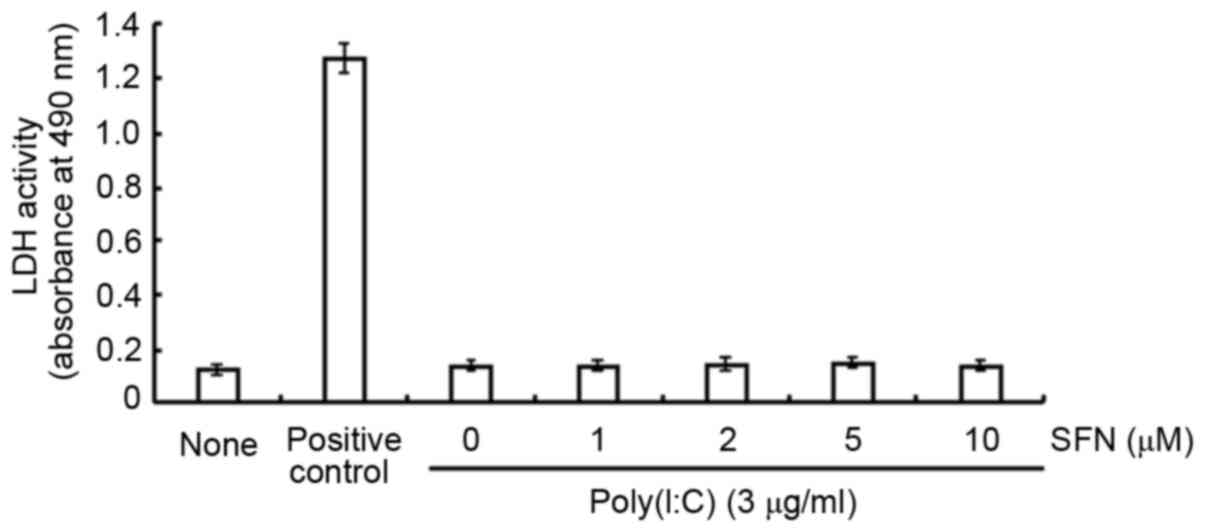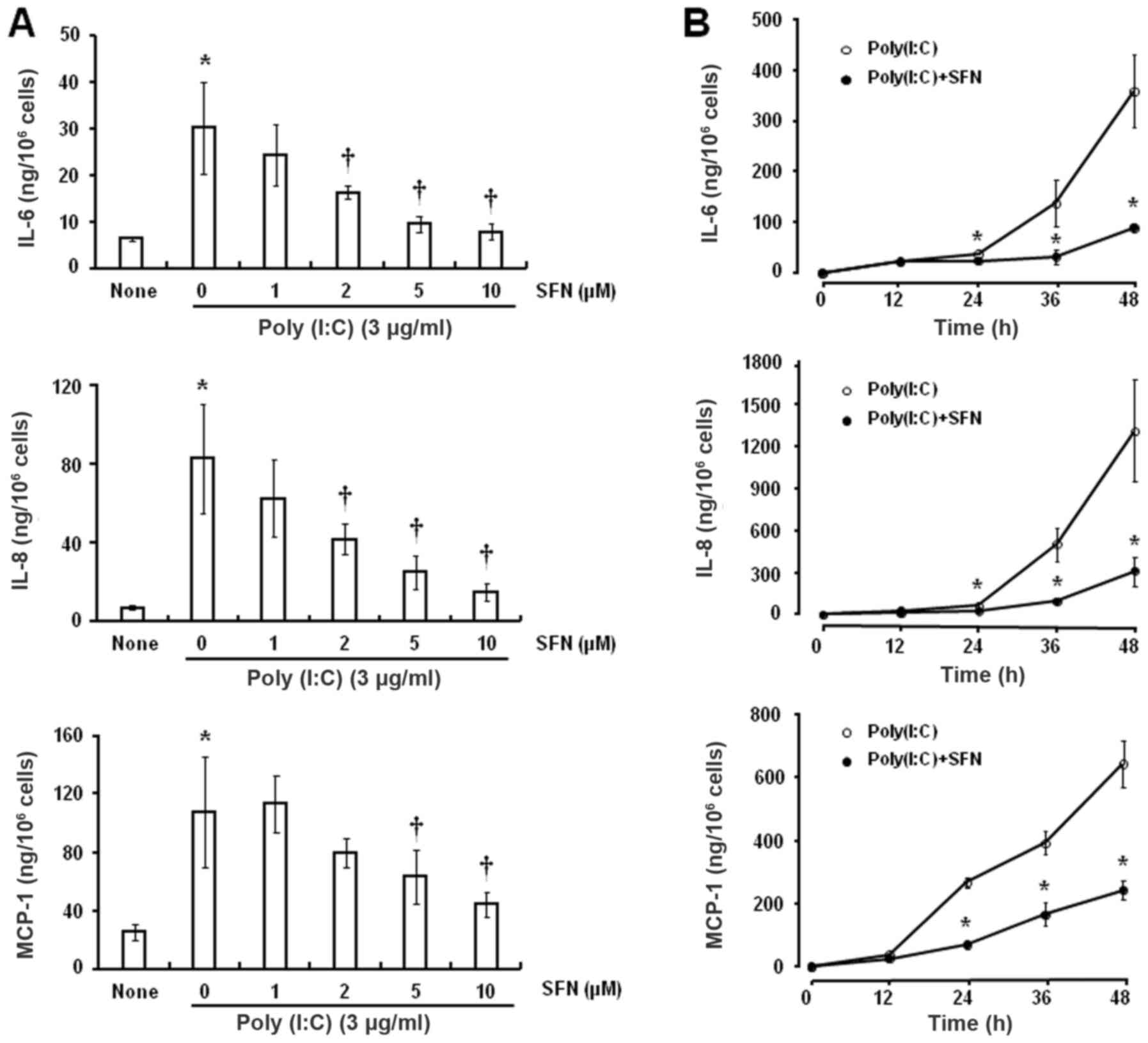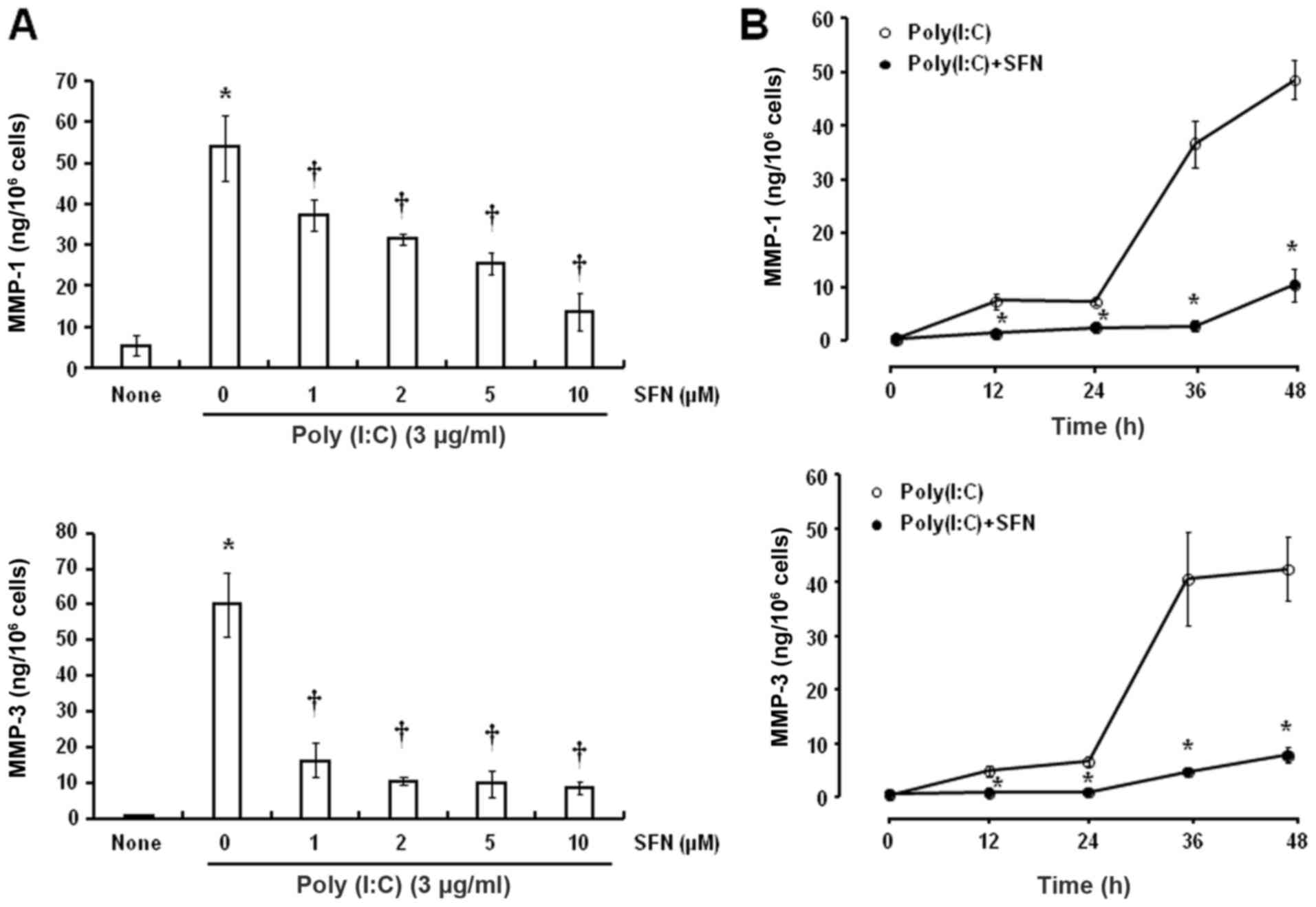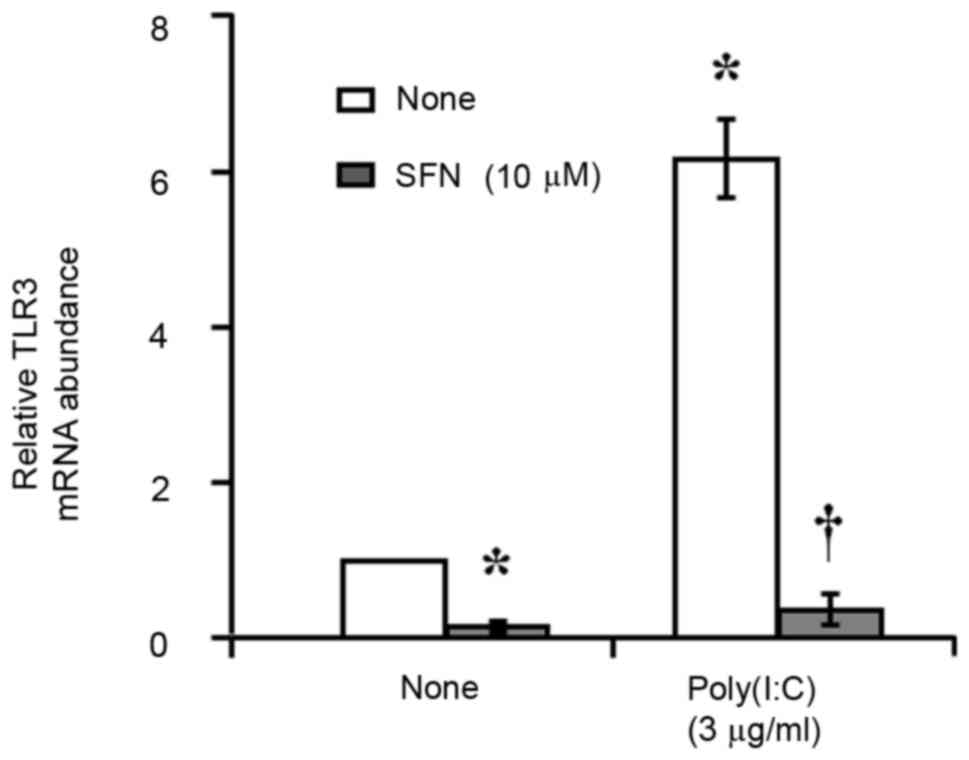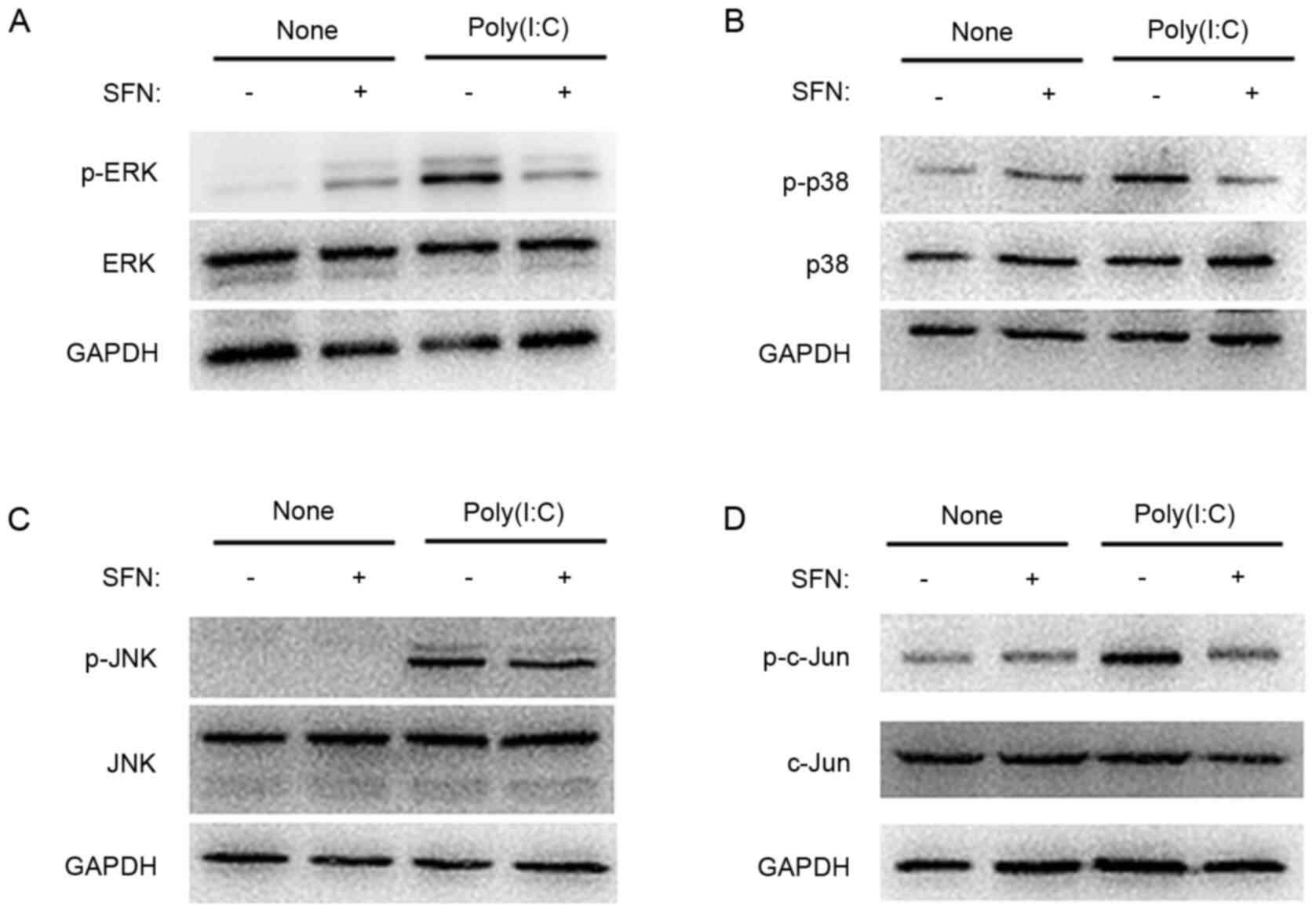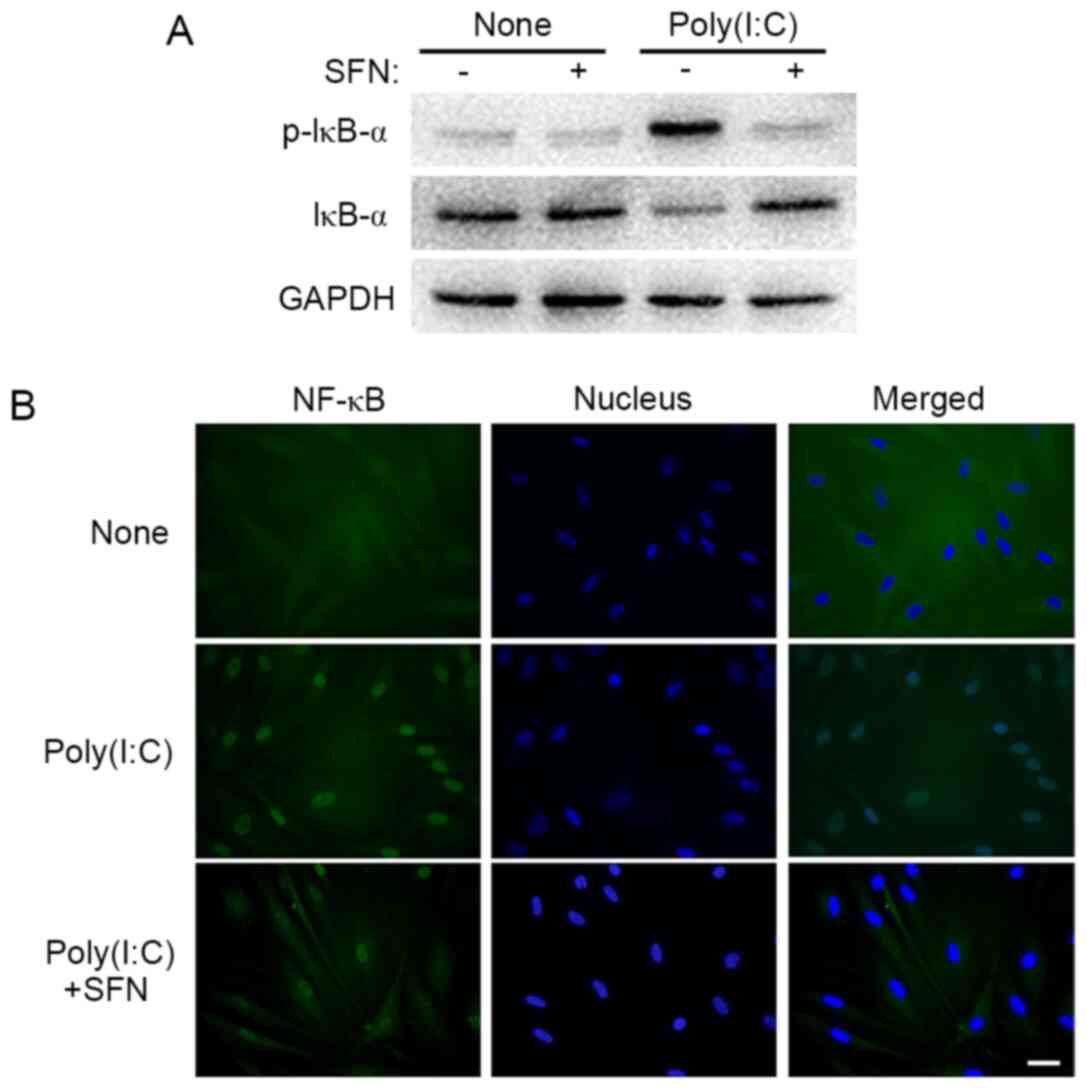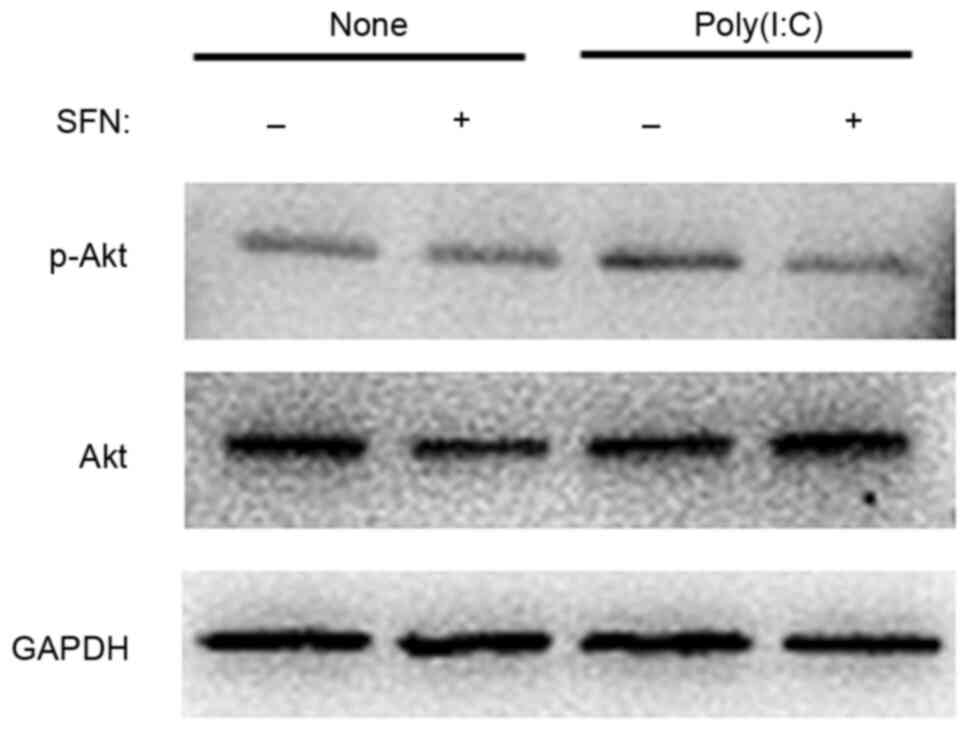|
1
|
Rowe AM, St Leger AJ, Jeon S, Dhaliwal DK,
Knickelbein JE and Hendricks RL: Herpes keratitis. Prog Retin Eye
Res. 32:88–101. 2013. View Article : Google Scholar : PubMed/NCBI
|
|
2
|
Farooq AV and Shukla D: Herpes simplex
epithelial and stromal keratitis: An epidemiologic update. Surv
Ophthalmol. 57:448–462. 2012. View Article : Google Scholar : PubMed/NCBI
|
|
3
|
Reynaud C, Rousseau A, Kaswin G, M'Garrech
M, Barreau E and Labetoulle M: Persistent impairment of quality of
life in patients with herpes simplex keratitis. Ophthalmology.
124:160–169. 2017. View Article : Google Scholar : PubMed/NCBI
|
|
4
|
Biswas PS and Rouse BT: Early events in
HSV keratitis-setting the stage for a blinding disease. Microbes
Infect. 7:799–810. 2005. View Article : Google Scholar : PubMed/NCBI
|
|
5
|
Knickelbein JE, Hendricks RL and
Charukamnoetkanok P: Management of herpes simplex virus stromal
keratitis: An evidence-based review. Surv Ophthalmol. 54:226–234.
2009. View Article : Google Scholar : PubMed/NCBI
|
|
6
|
Urtti A: Challenges and obstacles of
ocular pharmacokinetics and drug delivery. Adv Drug Deliv Rev.
58:1131–1135. 2006. View Article : Google Scholar : PubMed/NCBI
|
|
7
|
DelMonte DW and Kim T: Anatomy and
physiology of the cornea. J Cataract Refract Surg. 37:588–598.
2011. View Article : Google Scholar : PubMed/NCBI
|
|
8
|
Smith RS, Smith TJ, Blieden TM and Phipps
RP: Fibroblasts as sentinel cells. Synthesis of chemokines and
regulation of inflammation. Am J Pathol. 151:317–322.
1997.PubMed/NCBI
|
|
9
|
Xi X, McMillan DH, Lehmann GM, Sime PJ,
Libby RT, Huxlin KR, Feldon SE and Phipps RP: Ocular fibroblast
diversity: Implications for inflammation and ocular wound healing.
Invest Ophthalmol Vis Sci. 52:4859–4865. 2011. View Article : Google Scholar : PubMed/NCBI
|
|
10
|
Lee G, Park JS, Lee EJ, Ahn JH and Kim HS:
Anti-inflammatory and antioxidant mechanisms of urolithin B in
activated microglia. Phytomedicine. 55:50–57. 2019. View Article : Google Scholar : PubMed/NCBI
|
|
11
|
Guan X, Zhang M, Fu M, Luo S and Hu Q:
Herpes simplex virus type 2 immediate early protein ICP27 inhibits
IFN-beta production in mucosal epithelial cells by antagonizing
IRF3 activation. Front Immunol. 10:2902019. View Article : Google Scholar : PubMed/NCBI
|
|
12
|
Herbert C, Zeng QX, Shanmugasundaram R,
Garthwaite L, Oliver BG and Kumar RK: Response of airway epithelial
cells to double-stranded RNA in an allergic environment. Transl
Respir Med. 2:112014. View Article : Google Scholar : PubMed/NCBI
|
|
13
|
Liu Y, Kimura K, Yanai R, Chikama T and
Nishida T: Cytokine, chemokine, and adhesion molecule expression
mediated by MAPKs in human corneal fibroblasts exposed to
poly(I:C). Invest Ophthalmol Vis Sci. 49:3336–3344. 2008.
View Article : Google Scholar : PubMed/NCBI
|
|
14
|
Garrington TP and Johnson GL: Organization
and regulation of mitogen-activated protein kinase signaling
pathways. Curr Opin Cell Biol. 11:211–218. 1999. View Article : Google Scholar : PubMed/NCBI
|
|
15
|
Matsumoto M, Funami K, Oshiumi H and Seya
T: Toll-like receptor 3: A link between toll-like receptor,
interferon and viruses. Microbiol Immunol. 48:147–154. 2004.
View Article : Google Scholar : PubMed/NCBI
|
|
16
|
Kimura K, Orita T, Kondo Y, Zhou H and
Nishida T: Upregulation of matrix metalloproteinase expression by
poly(I:C) in corneal fibroblasts: Role of NF-κB and interleukin-1β.
Invest Ophthalmol Vis Sci. 51:5012–5018. 2010. View Article : Google Scholar : PubMed/NCBI
|
|
17
|
Bazzoni F, Cassatella MA, Rossi F, Ceska
M, Dewald B and Baggiolini M: Phagocytosing neutrophils produce and
release high amounts of the neutrophil-activating peptide
1/interleukin 8. J Exp Med. 173:771–774. 1991. View Article : Google Scholar : PubMed/NCBI
|
|
18
|
Bianconi V, Sahebkar A, Atkin SL and Pirro
M: The regulation and importance of monocyte chemoattractant
protein-1. Curr Opin Hematol. 25:44–51. 2018. View Article : Google Scholar : PubMed/NCBI
|
|
19
|
Scheller J, Chalaris A, Schmidt-Arras D
and Rose-John S: The pro- and anti-inflammatory properties of the
cytokine interleukin-6. Biochim Biophys Acta. 1813:878–888. 2011.
View Article : Google Scholar : PubMed/NCBI
|
|
20
|
Thomas J, Kanangat S and Rouse BT: Herpes
simplex virus replication-induced expression of chemokines and
proinflammatory cytokines in the eye: Implications in herpetic
stromal keratitis. J Interferon Cytokine Res. 18:681–690. 1998.
View Article : Google Scholar : PubMed/NCBI
|
|
21
|
Fini ME, Cook JR and Mohan R: Proteolytic
mechanisms in corneal ulceration and repair. Arch Dermatol Res. 290
(Suppl):S12–S23. 1998. View Article : Google Scholar : PubMed/NCBI
|
|
22
|
Matusheski NV, Juvik JA and Jeffery EH:
Heating decreases epithiospecifier protein activity and increases
sulforaphane formation in broccoli. Phytochemistry. 65:1273–1281.
2004. View Article : Google Scholar : PubMed/NCBI
|
|
23
|
Lenzi M, Fimognari C and Hrelia P:
Sulforaphane as a promising molecule for fighting cancer. Cancer
Treat Res. 159:207–223. 2014. View Article : Google Scholar : PubMed/NCBI
|
|
24
|
Zhou A, Hong Y and Lv Y: Sulforaphane
attenuates endometriosis in rat models through inhibiting PI3K/Akt
signaling pathway. Dose Response. 17:15593258198555382019.
View Article : Google Scholar : PubMed/NCBI
|
|
25
|
Qi T, Xu F, Yan X, Li S and Li H:
Sulforaphane exerts anti-inflammatory effects against
lipopolysaccharide-induced acute lung injury in mice through the
Nrf2/ARE pathway. Int J Mol Med. 37:182–188. 2016. View Article : Google Scholar : PubMed/NCBI
|
|
26
|
Qin S, Yang C, Huang W, Du S, Mai H, Xiao
J and Lü T: Sulforaphane attenuates microglia-mediated neuronal
necroptosis through down-regulation of MAPK/NF-κB signaling
pathways in LPS-activated BV-2 microglia. Pharmacol Res.
133:218–235. 2018. View Article : Google Scholar : PubMed/NCBI
|
|
27
|
Liu H, Smith AJO, Lott MC, Bao Y, Bowater
RP, Reddan JR and Wormstone IM: Sulforaphane can protect lens cells
against oxidative stress: Implications for cataract prevention.
Invest Ophthalmol Vis Sci. 54:5236–5248. 2013. View Article : Google Scholar : PubMed/NCBI
|
|
28
|
Dulull NK, Dias DA, Thrimawithana TR and
Kwa FAA: L-sulforaphane confers protection against oxidative stress
in an in vitro model of age-related macular degeneration. Curr Mol
Pharmacol. 11:237–253. 2018. View Article : Google Scholar : PubMed/NCBI
|
|
29
|
Ziaei A, Schmedt T, Chen Y and Jurkunas
UV: Sulforaphane decreases endothelial cell apoptosis in fuchs
endothelial corneal dystrophy: A novel treatment. Invest Ophthalmol
Vis Sci. 54:6724–6734. 2013. View Article : Google Scholar : PubMed/NCBI
|
|
30
|
Erdinest N, Aviel G, Moallem E, Anteby I,
Yahalom C, Mechoulam H, Ovadia H and Solomon A: Expression and
activation of toll-like receptor 3 and toll-like receptor 4 on
human corneal epithelial and conjunctival fibroblasts. J Inflamm
(Lond). 11:32014. View Article : Google Scholar : PubMed/NCBI
|
|
31
|
Livak KJ and Schmittgen TD: Analysis of
relative gene expression data using real-time quantitative PCR and
the 2(-Delta Delta C(T)) method. Methods. 25:402–408. 2001.
View Article : Google Scholar : PubMed/NCBI
|
|
32
|
Jin X, Qin Q, Chen W and Qu J: Expression
of toll-like receptors in the healthy and herpes simplex
virus-infected cornea. Cornea. 26:847–852. 2007. View Article : Google Scholar : PubMed/NCBI
|
|
33
|
Nagel MA, Choe A, Rempel A, Wyborny A,
Stenmark K and Gilden D: Differential regulation of matrix
metalloproteinases in varicella zoster virus-infected human brain
vascular adventitial fibroblasts. J Neurol Sci. 358:444–446. 2015.
View Article : Google Scholar : PubMed/NCBI
|
|
34
|
Prochnau D, Lehmann M, Straube E, Figulla
HR and Rödel J: Human cytomegalovirus induces MMP-1 and MMP-3
expression in aortic smooth muscle cells. Acta Microbiol Immunol
Hung. 58:303–317. 2011. View Article : Google Scholar : PubMed/NCBI
|
|
35
|
Caignard G, Leiva-Torres GA, Leney-Greene
M, Charbonneau B, Dumaine A, Fodil-Cornu N, Pyzik M, Cingolani P,
Schwartzentruber J, Dupaul-Chicoine J, et al: Genome-wide mouse
mutagenesis reveals CD45-mediated T cell function as critical in
protective immunity to HSV-1. PLoS Pathog. 9:e10036372013.
View Article : Google Scholar : PubMed/NCBI
|
|
36
|
Yang YN, Bauer D, Wasmuth S, Steuhl KP and
Heiligenhaus A: Matrix metalloproteinases (MMP-2 and 9) and tissue
inhibitors of matrix metalloproteinases (TIMP-1 and 2) during the
course of experimental necrotizing herpetic keratitis. Exp Eye Res.
77:227–237. 2003. View Article : Google Scholar : PubMed/NCBI
|
|
37
|
Heiligenhaus A, Li HF, Yang Y, Wasmuth S,
Steuhl KP and Bauer D: Transplantation of amniotic membrane in
murine herpes stromal keratitis modulates matrix metalloproteinases
in the cornea. Invest Ophthalmol Vis Sci. 46:4079–4085. 2005.
View Article : Google Scholar : PubMed/NCBI
|
|
38
|
Wiegand C, Schönfelder U, Abel M, Ruth P,
Kaatz M and Hipler UC: Protease and pro-inflammatory cytokine
concentrations are elevated in chronic compared to acute wounds and
can be modulated by collagen type I in vitro. Arch Dermatol Res.
302:419–428. 2010. View Article : Google Scholar : PubMed/NCBI
|
|
39
|
Kimura K, Nomi N, Yan ZH, Orita T and
Nishida T: Inhibition of poly(I:C)-induced matrix metalloproteinase
expression in human corneal fibroblasts by triptolide. Mol Vis.
17:526–532. 2011.PubMed/NCBI
|
|
40
|
Chaiprasongsuk A, Lohakul J, Soontrapa K,
Sampattavanich S, Akarasereenont P and Panich U: Activation of Nrf2
reduces UVA-mediated MMP-1 upregulation via MAPK/AP-1 signaling
cascades: The photoprotective effects of sulforaphane and
hispidulin. J Pharmacol Exp Ther. 360:388–398. 2017. View Article : Google Scholar : PubMed/NCBI
|
|
41
|
Choi YJ, Lee WS, Lee EG, Sung MS and Yoo
WH: Sulforaphane inhibits IL-1β-induced proliferation of rheumatoid
arthritis synovial fibroblasts and the production of MMPs, COX-2,
and PGE2. Inflammation. 37:1496–1503. 2014. View Article : Google Scholar : PubMed/NCBI
|
|
42
|
Meylan E and Tschopp J: Toll-like
receptors and RNA helicases: Two parallel ways to trigger antiviral
responses. Mol Cell. 22:561–569. 2006. View Article : Google Scholar : PubMed/NCBI
|
|
43
|
Takeuchi O and Akira S: Toll-like
receptors; their physiological role and signal transduction system.
Int Immunopharmacol. 1:625–635. 2001. View Article : Google Scholar : PubMed/NCBI
|
|
44
|
Orita T, Kimura K, Zhou HY and Nishida T:
Poly(I:C)-induced adhesion molecule expression mediated by
NF-{kappa}B and phosphoinositide 3-kinase-Akt signaling pathways in
human corneal fibroblasts. Invest Ophthalmol Vis Sci. 51:5556–5560.
2010. View Article : Google Scholar : PubMed/NCBI
|
|
45
|
Sweeney SE, Kimbler TB and Firestein GS:
Synoviocyte innate immune responses: II. Pivotal role of IFN
regulatory factor 3. J Immunol. 184:7162–7168. 2010. View Article : Google Scholar : PubMed/NCBI
|
|
46
|
Lawrence T: The nuclear factor NF-kappaB
pathway in inflammation. Cold Spring Harb Perspect Biol.
1:a0016512009. View Article : Google Scholar : PubMed/NCBI
|
|
47
|
Hayden MS and Ghosh S: Shared principles
in NF-kappaB signaling. Cell. 132:344–362. 2008. View Article : Google Scholar : PubMed/NCBI
|
|
48
|
Sun Y, Liu WZ, Liu T, Feng X, Yang N and
Zhou HF: Signaling pathway of MAPK/ERK in cell proliferation,
differentiation, migration, senescence and apoptosis. J Recept
Signal Transduct Res. 35:600–604. 2015. View Article : Google Scholar : PubMed/NCBI
|
|
49
|
Arthur JS and Ley SC: Mitogen-activated
protein kinases in innate immunity. Nat Rev Immunol. 13:679–692.
2013. View Article : Google Scholar : PubMed/NCBI
|
|
50
|
Hoesel B and Schmid JA: The complexity of
NF-κB signaling in inflammation and cancer. Mol Cancer. 12:862013.
View Article : Google Scholar : PubMed/NCBI
|
|
51
|
Trop-Steinberg S and Azar Y: AP-1
expression and its clinical relevance in immune disorders and
cancer. Am J Med Sci. 353:474–483. 2017. View Article : Google Scholar : PubMed/NCBI
|
|
52
|
Bian ZM, Elner SG, Yoshida A and Elner VM:
Differential involvement of phosphoinositide 3-kinase/Akt in human
RPE MCP-1 and IL-8 expression. Invest Ophthalmol Vis Sci.
45:1887–1896. 2004. View Article : Google Scholar : PubMed/NCBI
|















